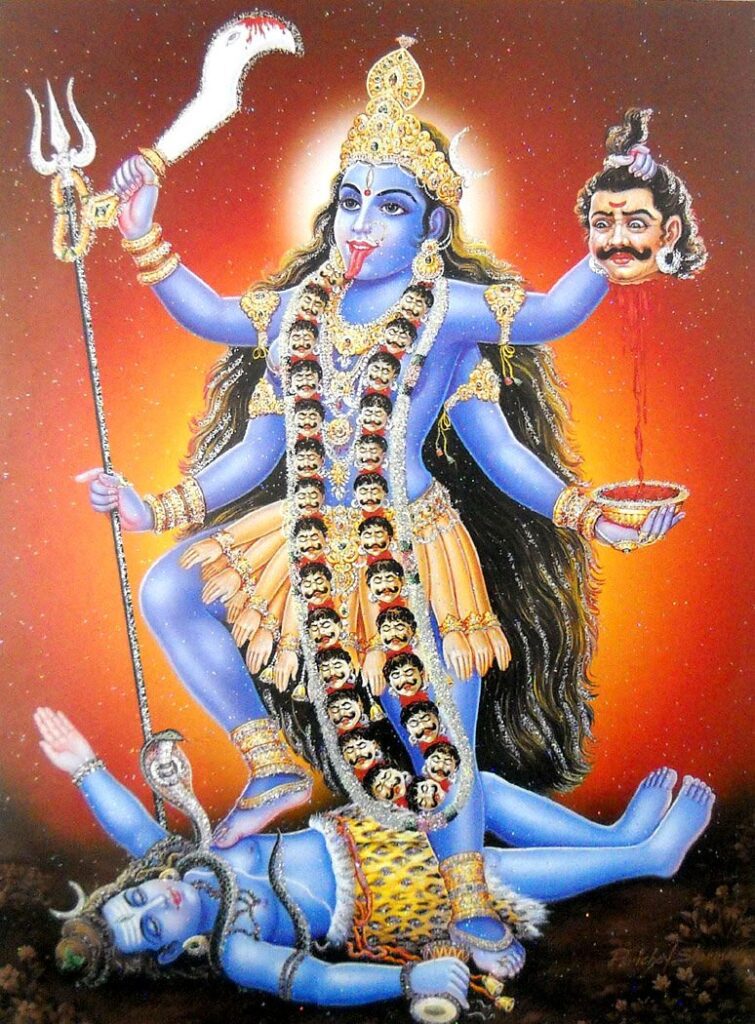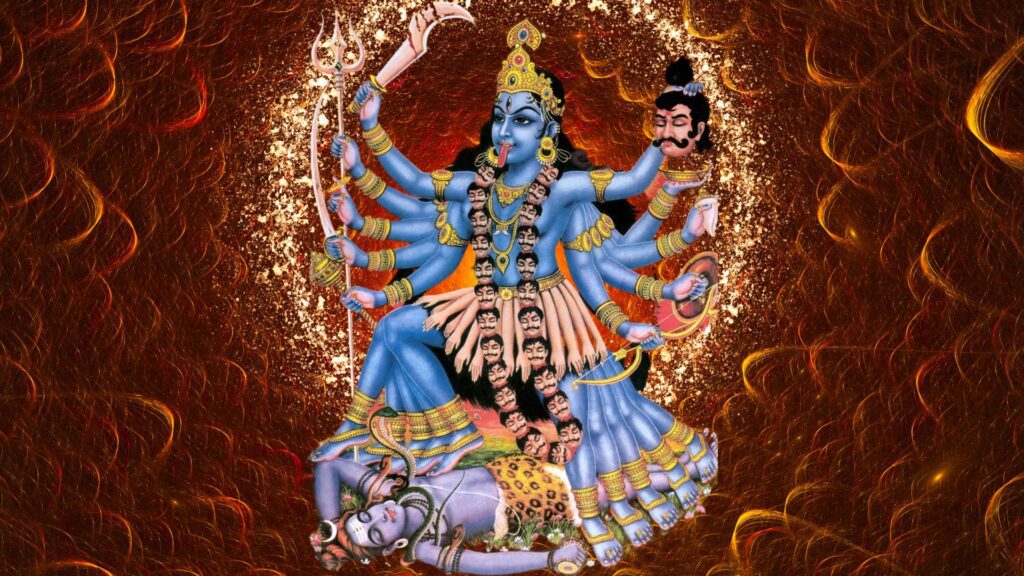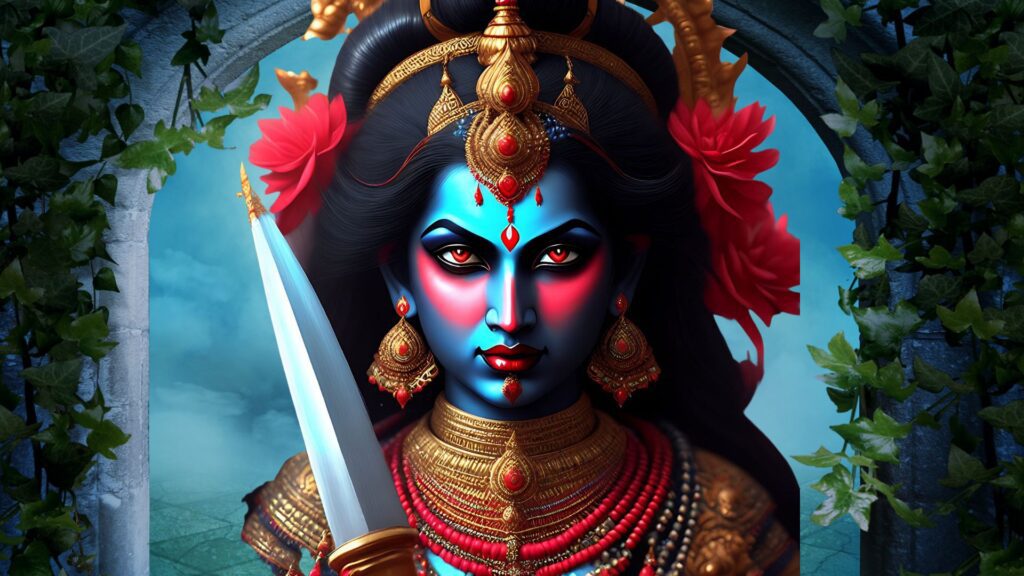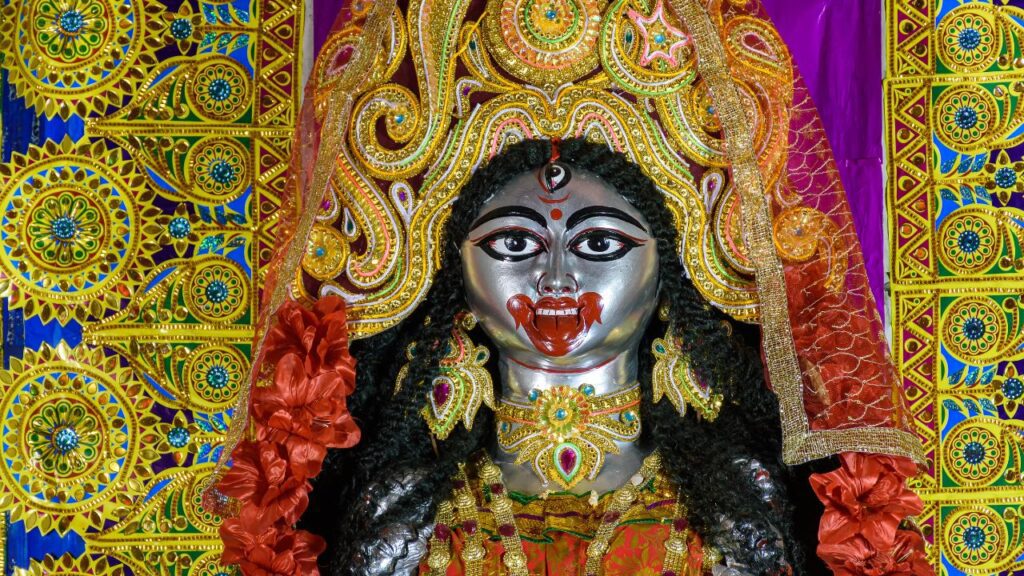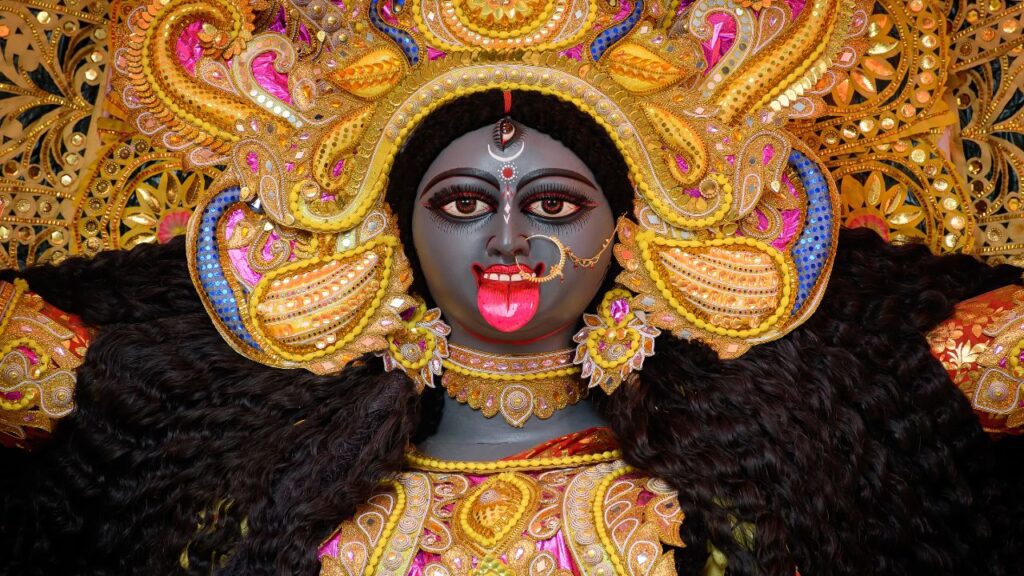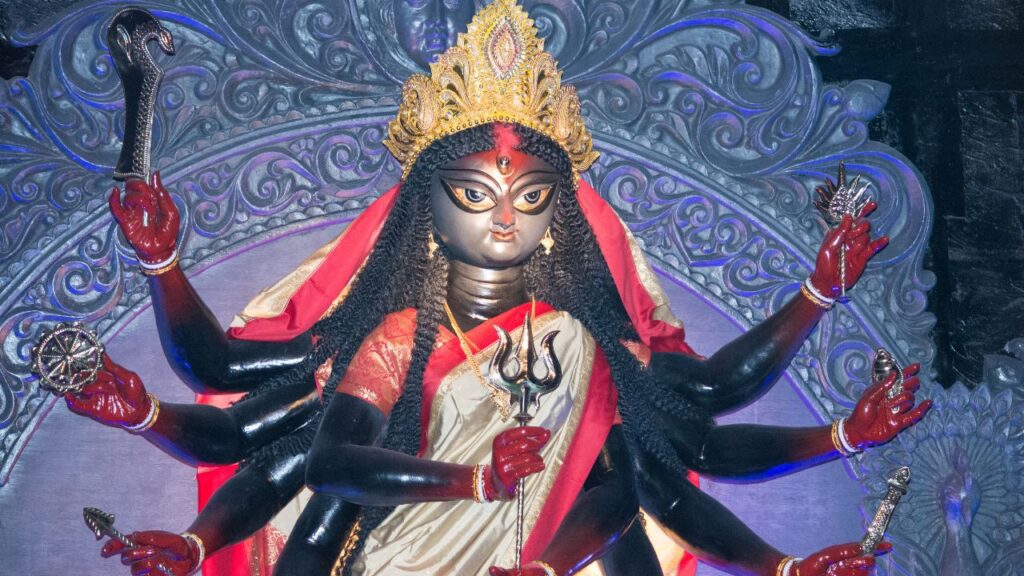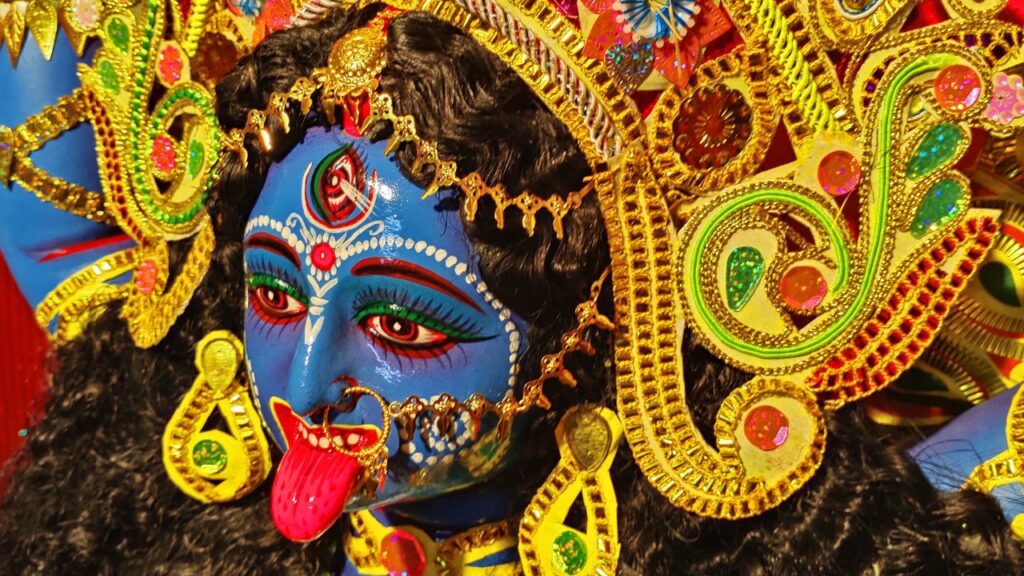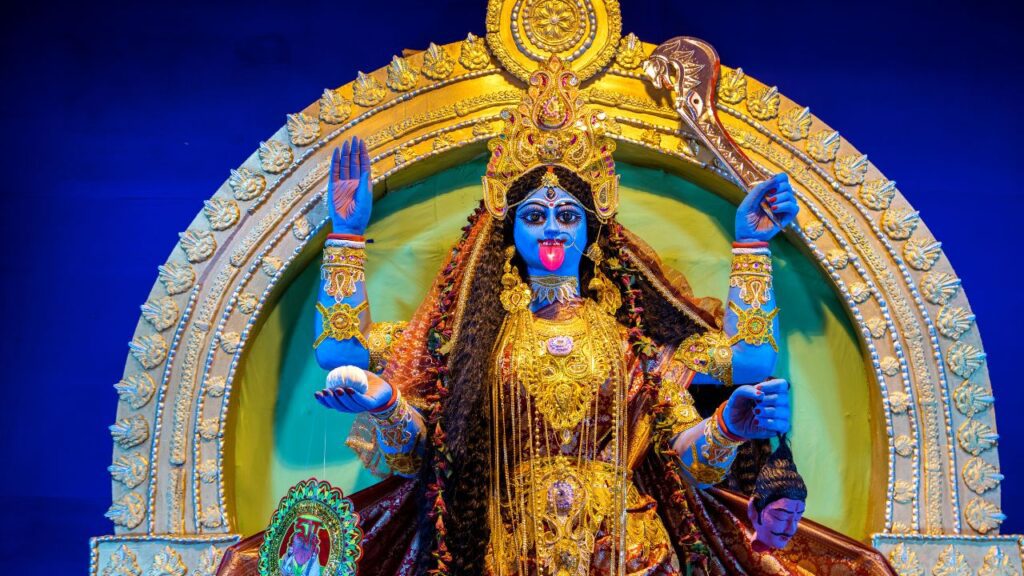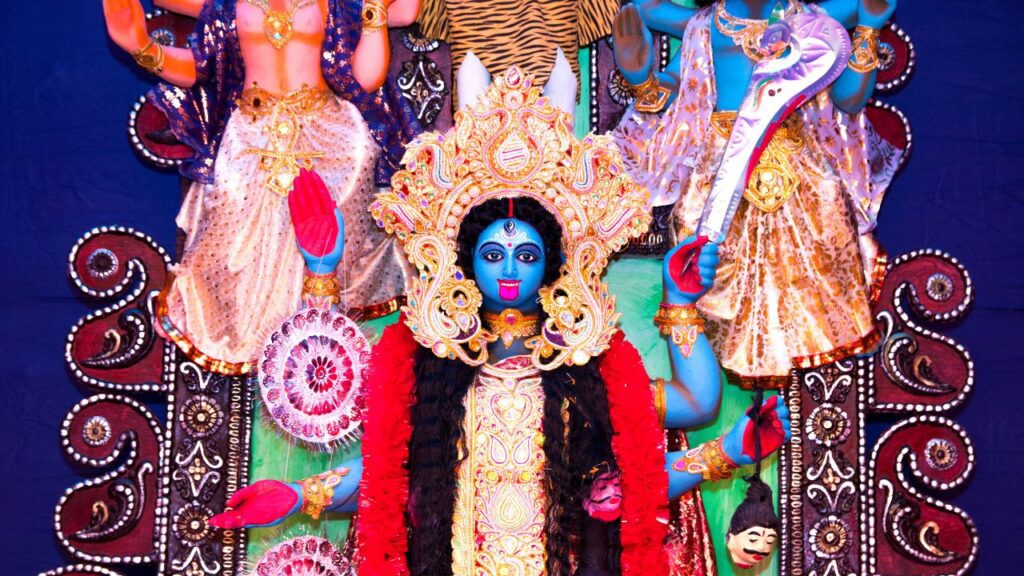Kali History : Origins of Goddess Kaali in Hindu Mythology
Introduction
For millennia both researchers and believers have been enthralled by the ferocious and mysterious Hindu deity Kali. Nestled in layers of myth, tradition, and symbolic meaning, the beginnings of this fascinating goddess have been the focus of much research and discussion among the rich tapestry of Hindu mythology. From her terrifying image to her great philosophical connections, the goddess Kali has become a multifarious and sophisticated character whose narrative is still developing and exposing fresh layers of insight.
The Primordial Roots of Kali
The goddess Kali has her roots in the ancient Vedic writings, where her primordial form initially showed up as Raatri, the goddess of the night. With her connotations of darkness, time, and the cycle of creation and destruction, this primordial figure set the groundwork for the later Kali archetypal development. The violent and bloodthirsty goddess Kottravai, whose traits would eventually be woven into the fabric of Kali’s mythos, was introduced by the Sangam literature of the Tamil region, so augmenting the changing narrative.
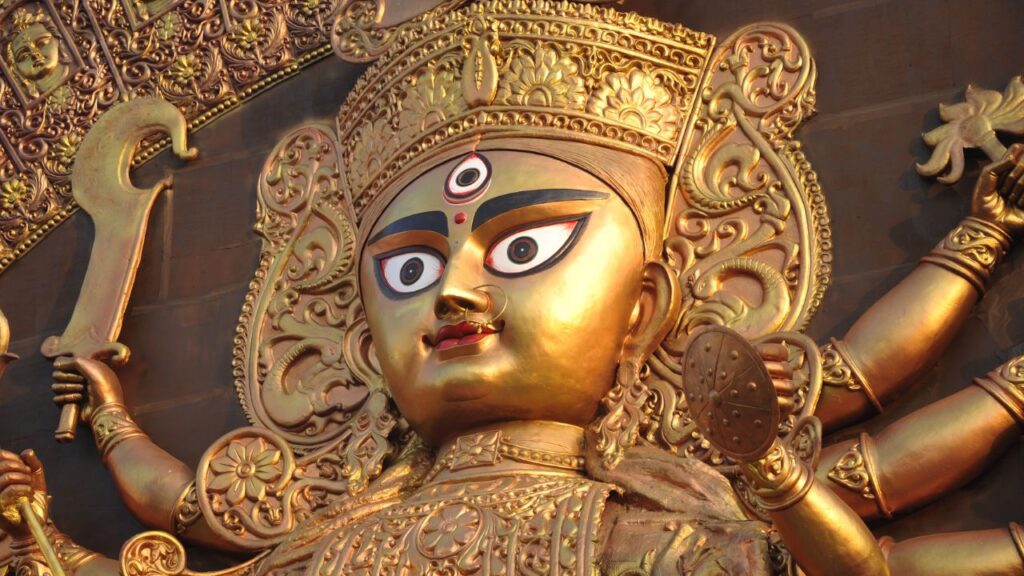
Kali Emerging in the Puranas
The ancient Hindu mythical writings, the Puranas, have their composition that securely placed Kali among the pantheon of Hindu gods. Found in a foundational book in the Markandeya Purana, the Devi-Mahatmyam tells the dramatic story of Kali’s birth, characterizing her as an emanation from the brow of the goddess Durga engaged in a violent struggle against the evil forces. This story confirmed Kali’s position as a demon slayer as well as her relationship to the larger-than-life character of Durga, the representation of divine feminine power.
Kali’s Relationship with Shiva
Likewise fascinating and complicated is the mythos about Kali’s relationship with the Hindu god Shiva. Many legends have the two gods intricately entwined; Kali’s wild and erratic personality is often calmed by Shiva’s soothing presence. Particularly the Tantric traditions have investigated the great philosophical and symbolic meaning of this divine union, seeing Kali and Shiva as the embodied dynamic interaction between the active and passive, the manifest and the unmanifest, the creative and the destructive.
Kali in Tantric customs
Within the esoteric field of Tantra, Kali has become rather important since her function goes beyond traditional Hindu mythology. The Tantric writings—the Nirvāna-tantra and the Yogini-tantra—have raised Kali to the rank of the Ultimate Reality, the Absolute, and the very root of existence. The acceptance of Kali’s strong and apparently terrible features is considered as a road to enlightenment, a means of confronting and transcending the dualities of life, for Tantric believers.
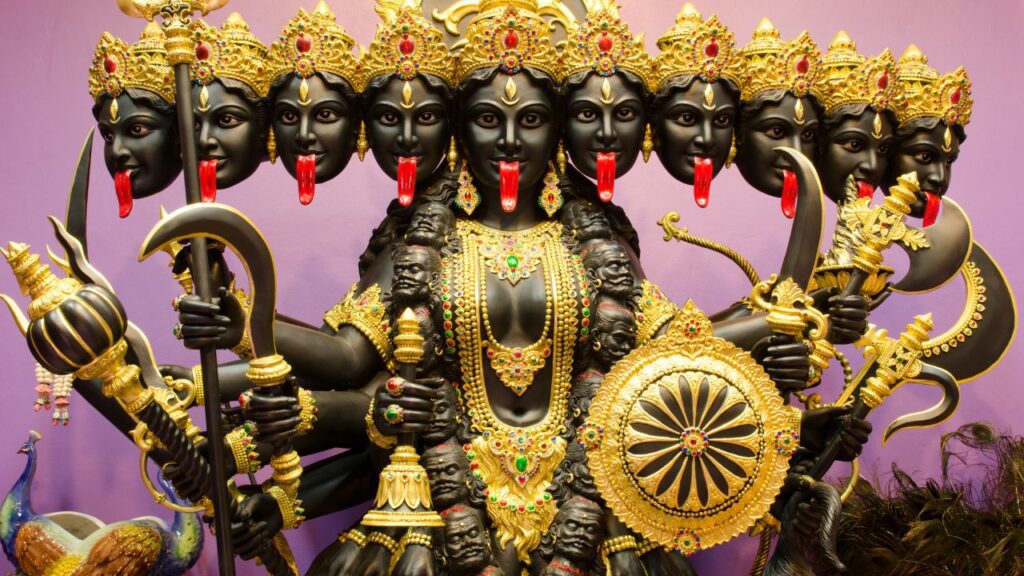
Kali’s Iconography and Symbolic Meaning
The vast and varied iconography of Kali is evidence of the several character of this goddess. From her portrayal as a terrifying, blood-thirsty figure decked with a garland of severed heads to her portrayal as a loving, mother figure, Kali’s visual images carry great symbolic weight. Her possessions, her gestures, and the several accoutrements she has all help to create a rich tapestry of meaning that invites closer examination and interpretation.
Duality of Kali’s Nature
Kali’s image is sometimes one of great dichotomy, her apparently terrible and destructive sides coexisting with her loving and caring ones. This duality reflects the goddess’s greater metaphysical relevance rather than only a surface-level conflict. Representing both the annihilation of the old and the birth of the new, Kali is considered as the personification of the cyclical character of life, therefore destroying the ego and revealing the divine.
Kali in Hindu Cosmology: Context
Within the broad context of Hindu cosmology, Kali’s function and importance go much beyond her personal mythos. Kali, as the Mahadevi, the Great Goddess, is sometimes seen as the active, creative element of the divine, the very source of the manifestation of the universe. Her connection with time, death, and the cycle of creation and destruction helps her to fit the basic ideas guiding the cosmic equilibrium.
The Worship of Kali
Particularly in the eastern and southern parts of the Indian subcontinent, the worship of Kali has long been a fundamental aspect of Hindu spiritual traditions. Celebrated around the new moon of the Hindu month Kartik, the yearly Kali Puja festival is evidence of the ongoing respect and dedication this goddess demands. For those seeking her blessings and protection, Kali’s temples—including the famed Kalighat Temple in Kolkata—have become centers of pilgrimage and spiritual inquiry.
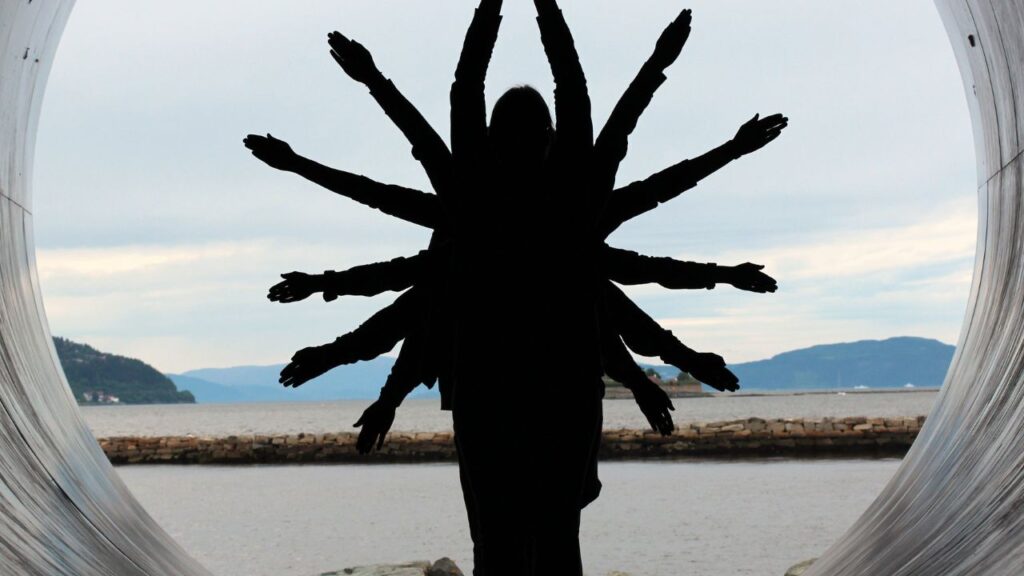
Stories of Kali from Mythology
The mythos around Kali is complex and varied, with several stories highlighting many facets of her character and importance. From her part in the murder of the demon Mahishasura to her run—through with a gang of thieves, these tales help to underline Kali’s ferocious protective nature, her relentless dedication to justice, and her capacity to go beyond accepted morals.
Kali throughout the Wider Cultural Landscape
The goddess Kali permeates many facets of South Asian cultural landscape, hence beyond the boundaries of Hindu mythology. With her image appearing in many media, from paintings and sculptures to poetry and literature, creative and literary investigation has centered on her iconography and symbolic connections. Kali’s complicated and sometimes misinterpreted character has also resulted in her misreading in popular culture, a phenomena that has helped to propagate preconceptions and false knowledge about this mysterious goddess.
Kali’s Contemporary Relevance and Legacy
The goddess Kali is still very much in the hearts and minds of Hindu followers all around, despite time passing and changing cultural terrain. Her multifarious character still inspires fresh ideas and interpretations since her legacy is evidence of the continuing power of the divine feminine. The lessons and insights provided by the goddess Kali – her acceptance of duality, her transcendence of conventional boundaries, and her relentless devotion to justice and transformation – are as relevant and intriguing as ever as the world negotiates the complexity of the modern period.
Conclusion
Hindu spiritual tradition is rich and complicated, as seen by the beginnings and development of the goddess Kali in Hindu mythology. From her ancient roots in the Vedic books to her many forms in the Puranas and Tantric texts, Kali’s tale is one of great change, symbolic meaning, and ongoing importance. Deeper exploration of the riddles of this mysterious goddess invites us to face the dualities defining our life and welcome the transforming force of the divine feminine.
#kali #origin #history #kalihistory #goddesskali
